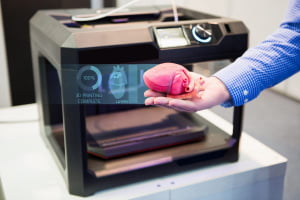3D Printing Transforming Medical Imagery

Over the years, there has been a lot of emphasis on the importance of being able to access medical image services online so that healthcare staff can share, store and see important patient information far more quickly and easily than before.
These days, as well as cloud-based medical data, 3D imagery can help physicians improve how they detect and treat patients.
That is why Newcastle Hospitals NHS Foundation Trust has revealed it will have an on-site 3D printing lab at its Royal Victoria Infirmary soon. This will be used to create models of patients to help with pre-surgical planning.
Spinal surgeon at Newcastle Hospitals Andrew Bowey told 3DPrintingIndustry: “3D printing has become an essential part of pre-operative planning in complex spinal cases.”
The doctor added: “We’re excited to now roll 3D printing out across the Trust. The benefits in other areas, such as trauma, are clear to see.”
Axial3D will provide the Trust with the printing lab, enabling hospitals to produce anatomical models to improve the outcome of their surgeries, as well as to help with medical training and when communicating with patients.
This technology could also save doctors valuable time, with a recent case study showing that a detailed 3D printed model of a spina bifida case was created on site within two days, allowing surgeons to perform an operation urgently.
Another form of technology that is improving patient outcomes is the use of artificial intelligence (AI). Microsoft recently revealed it is investing $1 billion (£831.7 million) into Open AI LP, which is intended to boost its Azure cloud-computing platform. This, in turn, could enable physicians to share patient data more easily.